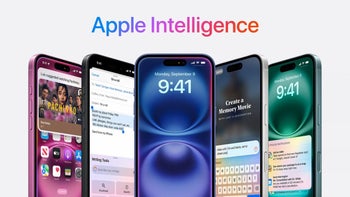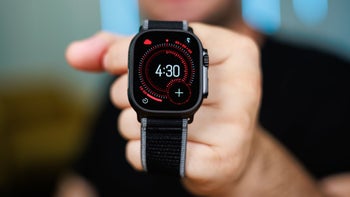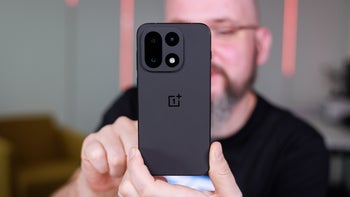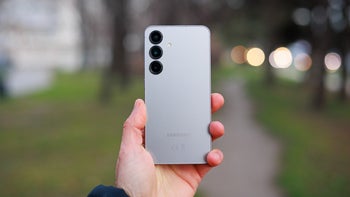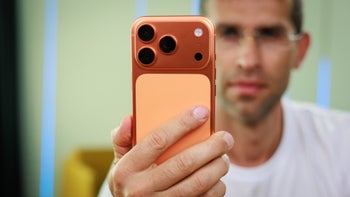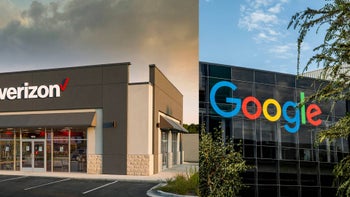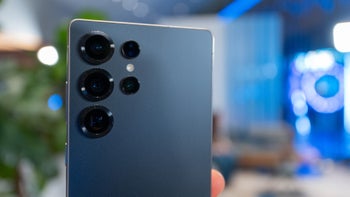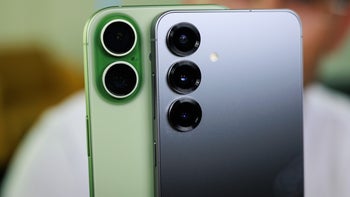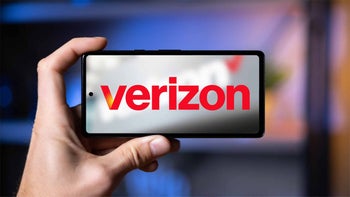- Home
- Samsung Phones
- You are here
Samsung Galaxy S6
Full Specifications
This device is also known as Samsung SM-G920F, Samsung SM-G920T, Samsung SM-G9200, Samsung SM-G920P, Samsung SM-G920A, Samsung SM-G920V, Samsung SM-G920W8, Samsung SM-G920R4, Samsung SM-G920I
I want it
121 users
I have it
106 users
I had it
118 users
Deals
Availability |
|
|---|---|
| Officially announced | Mar 01, 2015 |
| This device has different variants: View all | |
Design |
|
|---|---|
| Dimensions |
5.65 x 2.78 x 0.27 inches 143.4 x 70.5 x 6.8 mm |
| Weight | 4.87 oz / 138.0 g |
| Materials |
Back: Glass Frame: Aluminum |
| Biometrics | Fingerprint (touch) |
| Features | Notification light, Touch sensitive control keys |
| Keys | Left: Volume control; Right: Lock/Unlock key |
| Colors | Black, Gold, Blue, White |
Display |
|
|---|---|
| Size | 5.1-inch, 70.48% screen-to-body |
| Type | Super AMOLED |
| Resolution | 2560x1440px, 577 PPI |
| Protection | Corning Gorilla Glass 4 |
| PhoneArena Display Test | |
|---|---|
| Bright Max (20% APL) | Untested |
| Bright Min | 2 (Good) |
|
Learn more on our
PhoneArena Display Test Results page.
|
|
Hardware |
|
|---|---|
| System chip | Samsung Exynos 7 Octa 7420 (14 nm) |
| Processor |
Octa-core 2100 MHz ARM Cortex-A57 and ARM Cortex-A53 |
| GPU | Mali-T760 MP8 |
| Memory |
3GB (LPDDR4)/128GB 3GB/32GB 3GB/64GB |
| Storage expansion | not expandable |
| OS | Android (7.0 Nougat, 6.0 Marshmallow, 5.1 Lollipop, 5.0 Lollipop) |
| This device has different variants: View all | |
Battery |
|
|---|---|
| Type | 2550 mAh, Li - Ion |
| Charging |
Fast charging Qi and Powermat wireless charging |
Camera |
|
|---|---|
| Rear | Single camera |
| Main camera |
16 MP (OIS, Autofocus, BSI sensor) Aperture size: F1.9 Focal length: 28 mm Sensor size: 1/2.6" Pixel size: 1.12 μm |
| Flash | LED |
| Video recording |
4K UHD (30 fps), 1080p (60 fps), 720p (120 fps) OIS, HDR, Continuous autofocus, Picture-taking during video recording, Video light, Video calling |
| Front |
5 MP (HDR) Video capture: QHD (30 fps) |
Connectivity & Features |
|
|---|---|
| Bluetooth | 4.1 |
| WLAN |
a,b,g,n,ac,dual-band Multiple antennas, MIMO, Wi-Fi Direct, Hotspot 802.11 a, b, g, n, ac |
| USB | microUSB, USB 2.0 |
| Sensors | Accelerometer, Gyroscope, Compass, Hall (for flip covers), Barometer, Ambient light sensor, Proximity sensor |
| Hearing aid compatible | M3/T3 |
| Location | GPS, A-GPS, Glonass |
| Other | NFC, ANT+, UMA (Wi-Fi Calling), Infrared, Tethering, Computer sync, OTA sync |
| This device has different variants: View all | |
Multimedia |
|
|---|---|
| Headphones | 3.5mm jack |
| Speakers | Earpiece, Loudspeaker |
| Features | Album art cover, Background playback, Custom equalizer, Preset equalizer, Sound effects |
| Screen mirroring | DLNA,Wireless screen share |
| Additional microphone(s) | Noise cancellation, Video recording |
Cellular |
|
|---|---|
| LTE Bands | 1, 2, 3, 4, 5, 7, 8, 17, 20 |
| 3G Bands | 5, 2, 1 |
| Data Speed | LTE-A Cat 6 (300/50 Mbit/s), HSPA, HSUPA, UMTS |
| SIM type | Nano SIM |
| This device has different variants: View all | |
Regulatory Approval |
|
|---|---|
| FCC approval |
Date approved: Mar 02, 2015 FCC ID value: A3LSMG920A |
| Measured SAR |
Head: 0.49 W/kg Body: 0.96 W/kg Simultaneous Transmission: 1.25 W/kg Wireless Router: 1.04 W/kg |
| This device has different variants: View all | |
Alternative variants
with 32 GB storage
| Differences from the main variant: | |
|---|---|
| Memory | 32GB |
| Prices (MSRP) | €699 |
with 64 GB storage
| Differences from the main variant: | |
|---|---|
| Memory | 64GB |
| Prices (MSRP) | €799 |
for T-Mobile
| Differences from the main variant: | |
|---|---|
| LTE Bands | 1, 2, 3, 4, 5, 7, 12, 17, 20 |
| 3G Bands | 5, 4, 2, 1 |
| FCC approval |
Date approved: Mar 02, 2015 FCC ID value: A3LSMG920T |
| Measured SAR |
Head: 0.47 W/kg Body: 1.07 W/kg Simultaneous Transmission: 1.31 W/kg Wireless Router: 1.09 W/kg |
for Sprint
| Differences from the main variant: | |
|---|---|
| LTE Bands | 2, 4, 5, 12, 25, 26 |
| TDD Bands | 41 |
| 3G Bands | 5, 8, 2, 1 |
| Hearing aid compatible | M4/T3 |
| FCC approval |
Date approved: Mar 02, 2015 FCC ID value: A3LSMG920P |
| Measured SAR |
Head: 0.44 W/kg Body: 0.78 W/kg Simultaneous Transmission: 1.13 W/kg Wireless Router: 0.91 W/kg |
International version
| Differences from the main variant: | |
|---|---|
| LTE Bands | 1, 2, 3, 4, 5, 7, 8, 12, 17, 18, 19, 20, 26 |
| 3G Bands | 5, 8, 2, 1 |
| HD Voice | Yes |
| VoLTE | Yes |
| Location | GPS, A-GPS, Glonass, BeiDou |
| FCC approval |
Date approved: Mar 01, 2015 FCC ID value: A3LSMG920F |
| Measured SAR |
Head: 1.11 W/kg Body: 1.13 W/kg |
for Verizon Wireless
| Differences from the main variant: | |
|---|---|
| LTE Bands | 2, 3, 4, 5, 7, 17 |
| 3G Bands | 5, 8, 2, 1 |
| Data Speed | LTE, HSPA, HSUPA |
| Other | UMA (Wi-Fi Calling) |
| FCC approval |
Date approved: Mar 01, 2015 FCC ID value: A3LSMG920V |
| Measured SAR |
Head: 0.33 W/kg Body: 0.57 W/kg Simultaneous Transmission: 1.13 W/kg Wireless Router: 0.91 W/kg |
for U.S. Cellular
| Differences from the main variant: | |
|---|---|
| LTE Bands | 2, 4, 5, 12, 13, 17, 25 |
| 3G Bands | 6, 2 |
| FCC approval |
Date approved: Mar 03, 2015 FCC ID value: A3LSMG920R4 |
| Measured SAR |
Head: 0.44 W/kg Body: 0.78 W/kg Simultaneous Transmission: 1.13 W/kg Wireless Router: 0.91 W/kg |
| Differences from the main variant: | |
|---|---|
| Dual SIM | Yes |
Despite our efforts to provide full and correct Samsung Galaxy S6 specifications, there is always a possibility of admitting a mistake. If you see any wrong or incomplete data, please
If you are interested in using our specs commercially, check out our Phone specs database licensing page.
Overall User Rating
8.9
Build quality
9.4
Camera quality
9.3
Performance
8.8
Display
9.4
Battery life and charging
7.5
Related News
Galaxy S6 to Galaxy S10: Samsung's camera and image quality evolution through the years
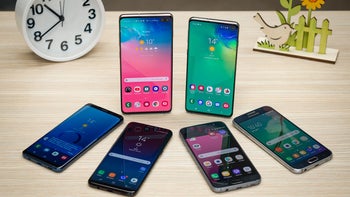
Let's get one thing clear first - when it comes to phone cameras, Samsung does a good job, but not an impeccable job. It's "always a bridesmaid, never a bride" kind of situation where the South Korean giant is always struggling second or third in the...

Samsung's ancient Galaxy S6 and S6 Edge are still receiving software updates
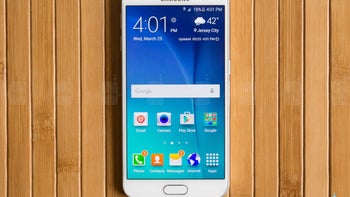
Commercially released almost four years ago on Android 5.0 Lollipop, the Galaxy S6 and S6 Edge naturally received Marshmallow and Nougat goodies back in 2016 and 2017, but no Oreo love despite several false alarms and inaccurate reports that got our ...

Most useless software features in Samsung's past smartphones
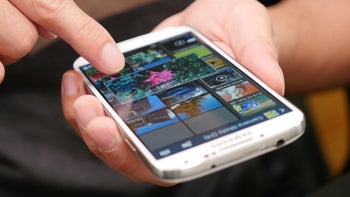
Ah yes, the Samsung Galaxy Note 9 has been making the rounds of late, showing to us all why it’s going to be one of the smartphones to beat this upcoming holiday season. No doubt a beast in nearly every facet, the Note 9 is yet evidence in how Samsun...

Samsung Galaxy S6 and S6 Edge begin receiving June security patch in Europe
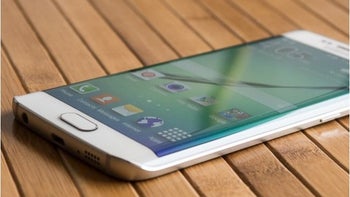
Back in April following the 3rd anniversary of their release, Samsung unsurprisingly took the Galaxy S6 and S6 Edge off of its list of devices eligible for security patches, a move that suggested no more updates would be sent out to the smartphones.C...

Discover More
- Samsung Galaxy S6 Review
- Samsung Galaxy S7 vs Samsung Galaxy S6
- Motorola DROID Turbo 2 vs Samsung Galaxy S6
- Apple iPhone 6s vs Samsung Galaxy S6
- Samsung Galaxy Note5 vs Samsung Galaxy S6
- Samsung Galaxy S6 Active vs Samsung Galaxy S6
- LG G4 vs Samsung Galaxy S6
- Samsung Galaxy S6 vs Google Nexus 6
- Samsung Galaxy S6 vs Samsung Galaxy S6 edge
- Samsung Galaxy S6 vs LG G3
- Samsung Galaxy S6 vs Sony Xperia Z3
- Samsung Galaxy S6 vs Apple iPhone 6 Plus
- Samsung Galaxy S6 vs HTC One M9
- Samsung Galaxy S6 vs Samsung Galaxy S5
- Samsung Galaxy S6 vs Apple iPhone 6
- Samsung Galaxy S6 vs Samsung Galaxy Note 4
- Samsung Galaxy S6 hands-on



